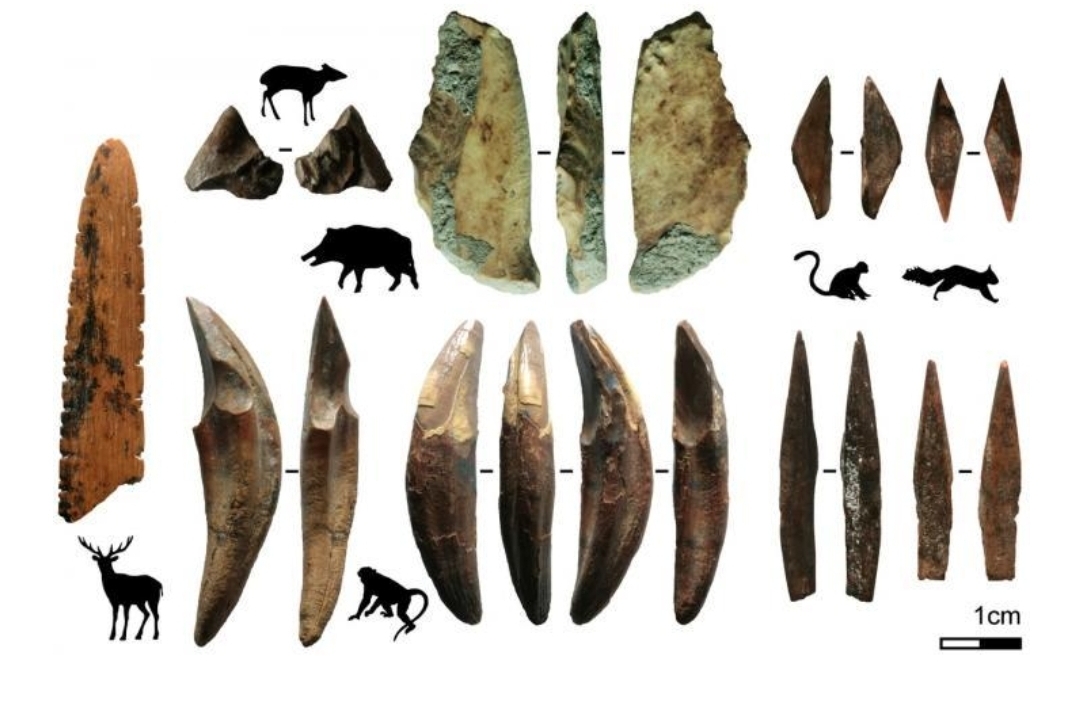
Paleontologists have recovered 48,000-year-old evidence of bow-and-arrow technology — the earliest such evidence found outside Africa — from a Sri Lankan cave, UPI reported.
Researchers also found tools that were likely used to make clothing, technology thought to be limited to cold-weather populations, according to a study published Friday in the journal Science Advances.
As dozens of studies have demonstrated, Asia — especially south and southeast Asia — was host to a complex history of human migration and settlement. Understanding this history is key to figuring out how early humans moved across Earth’s continents during the Late Pleistocene, between 129,000 and 11,700 years ago.
Long-occupied caves like the one at Fa-Hien Lena, found deep inside Sri Lanka’s Wet Zone forests, can offer insights into the region’s human history.
“Fa-Hien Lena Cave was first excavated in the 1980s when it yielded some of the earliest human fossils, bone tools and miniaturized stone tools — or ‘microliths’ — anywhere in South Asia, and the earliest on the island of Sri Lanka,” Patrick Roberts, an archaeologist and postdoctoral researcher with the Max Planck Institute for the Science of Human History in Germany, told UPI in an email.
“What was particularly interesting was that this site was found in the modern day tropical rainforest of Sri Lanka,” Roberts said. “These environments were long thought to be barriers to human occupation, with limited prey opportunities, toxic plants and disease challenges.”
Excavations at the cave revealed tools and artifacts representing four distinct periods of occupation, dating from 48,000 to 4,000 years ago. Among the artifacts, researchers identified 130 projectile points carved from animal bone. Many of the points featured impact fractures suggestive of hunting use.
“We can now place its [Fa-Hien Lena’s] occupation as starting at 48,000 to 45,000 years ago and have shown that humans in the rainforests of Sri Lanka were relying on tropical resources, including difficult-to-catch prey like monkeys and squirrels,” Roberts said. “This makes it some of the earliest evidence for human rainforest occupation and use outside of Africa.”
Animal remains suggest humans first used bow-and-arrows to hunt adult monkeys, rodents and other small mammals. Over time, humans increased the length of their tools in order to target larger animals, including pigs and deer.
The findings offer evidence of the tools and techniques early humans used to survive challenging habitats, such as dense tropical forests. Clothing may have helped populations avoid being eaten my mosquitoes, while bow-and-arrows allowed early humans to hunt fast-moving animals.
Most surveys of Pleistocene innovation have focused on Europe and the savannas of Africa as the wellsprings of material culture among early human populations, ignoring other parts of Africa, Asia, Australasia and the Americas.
“While the earliest clear evidence for bow-and-arrow technologies does indeed come from South Africa 64,000 years ago, the Sri Lanka evidence shows that it was not a one-off innovation linked to a singular adaptation,” Roberts said. “Instead, they were part of a human ‘toolkit’ that was multiple, diverse, and adaptable to different settings — in this case tropical rainforests and small, quick mammals.”
Researchers are currently working on excavating ancient human sites along the coast of Sri Lanka. Some evidence suggests different human groups along the coast and in the island’s interior forests may have interacted.
“We also found shell and ochre beads which suggest human symbolism was also being used in a rainforest context,” Roberts said. “Particularly fascinating is the fact that some of these beads come from shells from the sea.”
“We know, from isotopic evidence on human tooth enamel from the nearby site of Batadomba-lena, and later humans at Fa-Hien Lena, that humans were relying one rainforest resources for their diets all year round,” he said.
If the people of Fa-Hien Lena remained in the forests but used beads from the coast, it’s likely they traded with people from other parts of the island.
(Colombo Gazette)
